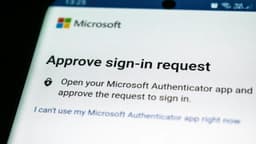How to Set Up Custom SSL Certificate on Laravel Forge
Have you been wondering how to configure a custom SSL certificate on your Laravel Forge-managed server? Setting up SSL certificates is essential for ensuring secure connections between your users and your web application. In this guide, we will walk you through the step-by-step process of deploying a custom SSL certificate on your Forge server to enable secure HTTPS connections.
Prerequisites
Before we get started with configuring a custom SSL certificate on Laravel Forge, make sure you have the following prerequisites:
- Access to your Forge account.
- Your domain added to your Forge server.
- An SSL certificate and private key ready to deploy. You can obtain SSL certificates from trusted providers such as Let's Encrypt, Comodo, or DigiCert.
Step 1: Navigate to Your Forge Dashboard
Log in to your Forge account and navigate to the dashboard. Select the server where you want to configure the custom SSL certificate.
Step 2: Add SSL Certificate
In the server dashboard, locate the "SSL" tab on the left-hand side menu. Click on the "Add Certificate" button. You will be prompted to enter the domain and upload the SSL certificate files.
Step 3: Upload SSL Certificate Files
Upload the SSL certificate file (usually with a .crt extension) and the private key file (usually with a .key extension) that you obtained from your SSL certificate provider. Make sure that the files are in the correct format and contain the necessary information.
Step 4: Configure SSL Certificate
Once you have uploaded the certificate files, Forge will automatically detect and verify the SSL certificate. You will need to choose the correct certificate type (e.g., Let's Encrypt, Custom Certificate) and configure any additional settings such as the certificate's expiry notification email.
Step 5: Verify SSL Configuration
After configuring the SSL certificate, Forge will validate the certificate files and update the server configuration. You can monitor the progress and status of the SSL setup from the Forge dashboard.
Step 6: Update Web Server Configuration
Forge will automatically update the Nginx or Apache web server configuration to enable HTTPS connections using the custom SSL certificate. You may need to restart the web server for the changes to take effect.
Step 7: Test SSL Configuration
To ensure that the SSL certificate is properly configured, you should test the HTTPS connection to your domain using a web browser. Type https://yourdomain.com in the address bar and check for the SSL padlock icon to verify the secure connection.
Step 8: Set Up HTTPS Redirect
Forcing HTTPS redirection is crucial to ensure that all connections to your web application are secure. You can set up an HTTPS redirect by adding a redirection rule in your web server configuration to redirect HTTP traffic to HTTPS.
Step 9: Renew SSL Certificate
SSL certificates have an expiration date and need to be renewed periodically to ensure continued secure connections. Monitor the expiry date of your SSL certificate and renew it before it expires to avoid any service disruptions.
Step 10: Stay Informed
Stay informed about best practices and security updates related to SSL certificates and HTTPS configurations. Regularly check for any security advisories and apply necessary patches or updates to maintain a secure environment for your web application.
Congratulations! You have successfully set up a custom SSL certificate on your Laravel Forge-managed server. Your website is now equipped with secure HTTPS connections to protect the privacy and security of your users' data.
Now that you have configured your SSL certificate, you can explore additional security measures such as implementing HTTP security headers, enabling two-factor authentication, and setting up firewall rules to further enhance the security of your web application.
For more information on SSL certificates and secure configurations, you can refer to the official Laravel Forge documentation and explore additional resources on web security practices.
Secure your web application with a custom SSL certificate on Laravel Forge and provide your users with a safe and secure browsing experience. Start protecting your website today!












